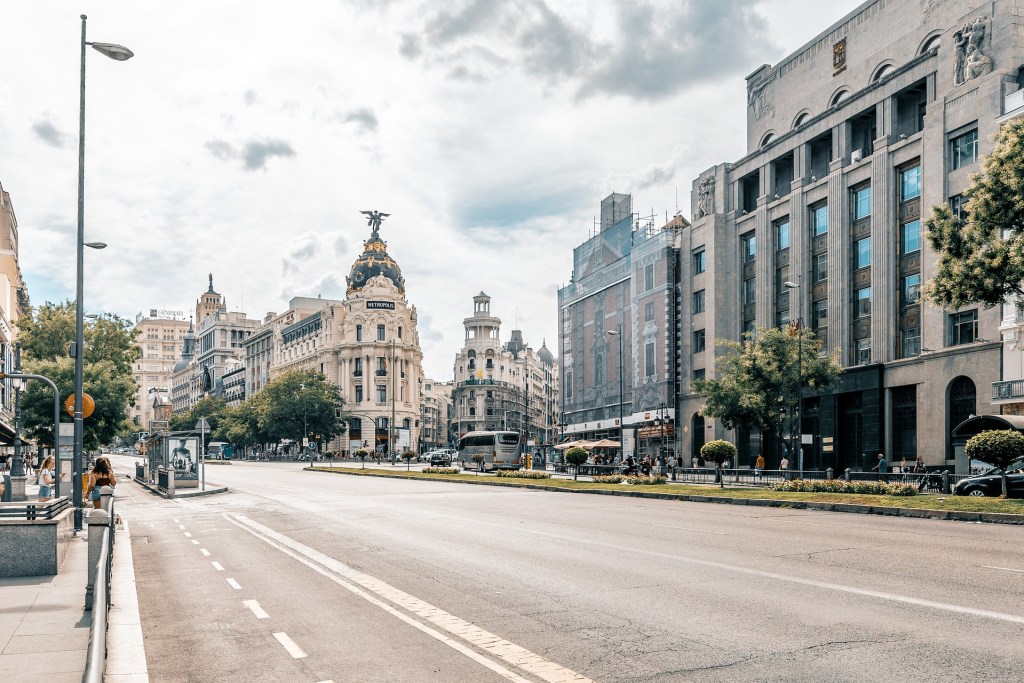Corona
Locked up in Madrid – Impressions From the European Corona Hotspot

The small bar in Calle de Fortuny in Madrid’s city centre is crowded, as are many others these days. The people of Madrid don’t miss the chance to go out with friends. And yet everything is different since the weekend: Once again it has become quiet in the streets, and the normally lively Spanish capital has been closed off. According to the World Health Organisation WHO, 850 cases per 100,000 inhabitants have once again made the region the epicentre of the pandemic in Europe. Spain currently counts 32,000 corona deaths and 800,000 corona cases, almost forty percent of which are reported in Madrid. The second wave has hit the city with full force. Thousands of jobs in hotels, restaurants, flower shops and travel agencies are disappearing. The pandemic is hitting Spain not only in the geographical sense, but right in the heart.
Anyone who wants to leave Madrid in the next two weeks must present good reasons. Friends or relatives are only allowed to meet up with a maximum of six people. Restaurants and bars will have to close at 11 pm and reduce their capacity by half. After all, the new rules feel much less drastic than the lockdown in spring, when Madrid’s residents were practically forbidden to leave their homes for months.
The conservative regional president Isabel Díaz Ayuso reluctantly put the order into effect last Friday and appealed at the same time. The socialist central government had intervened in view of the rapid increase in new infections. Yesterday the Supreme Court of Madrid refused to ratify the decree because it did not have the necessary legal basis and violated the fundamental rights of citizens. This means that fines can no longer be imposed for violations. Whether all measures should be suspended altogether is still under consideration by the Spanish National Court of Justice. So what now? Everything is up in the air.
As if through a magnifying glass, dividing lines in Spanish politics become visible: for weeks, the central government and the Madrid regional government have been engaged in a bitter exchange of blows in the struggle to find the right containment strategy between health protection and economic preservation. It is a balancing act: if you severely and permanently restrict economic freedom, you endanger health in the end. On the other hand, sustainable economic recovery is unthinkable without containing the virus – especially in the tourism industry, on which Spain depends so much.
There is also a clash within the coalition of conservative Partido Popular (PP) and liberal Ciudadanos in the Autonomous Region of Madrid. While regional president Ayuso is looking for confrontation and sees the central government’s crackdown as a purely politically motivated move, the liberal coalition partner has distanced itself from the public dispute. Ciudadanos calls for constructive cooperation on all sides to fight the virus and agreed to seal off the city.
In view of the rigorous European curfews in spring, the question arises why Spain is once again in such a bad position only three months after the end of the state of emergency. One possible explanation is that a destructive dynamic has developed in Spanish politics which, like the virus, has a toxic effect. All too often, Spanish politicians are guided by political considerations and personal interests rather than scientific criteria in the fight against the corona virus. The polarisation in the Spanish party system makes it difficult to respond adequately to the challenges. While in neighbouring Italy, the nation stands together in the face of the crisis, many Spanish politicians seem to seek to exacerbate the country’s division.
A cool head is needed in this emotionally charged dispute, in order to reflect on reason and responsibility. Ignacio Aguado (Ciudadanos), Vice-President of the Capital Region, stated: “We have time to bring the situation under control if we are able to give ourselves a political breather. We must stop blaming others”.
Many Madrileneans will agree with this. The population is increasingly irritated by the crisis management in the Spanish capital. There is confusion about the new measures, with many considering them ineffective and absurd. The daily “El Pais” headlined: “Madrid, capital of confusion”. Parks are being closed, but bars are allowed to stay open. You can travel from Berlin to Madrid, but not from nearby Toledo.
Good crisis management involves going through a learning process, acknowledging the new reality and learning from mistakes. The Spanish government has so far refused to allow an independent commission of experts to examine how the pandemic is being handled. The government actually had an exemplary strategy, since the state of emergency was followed by a de-escalation plan with rules for the “new normality”. This included an asymmetric relaxation of the rules within the Spanish territory in four phases without fixed deadlines, depending on the transmission rate and the capacity of the health system in the respective province. However, many regions skipped phases or did not comply with the requirements for monitoring case numbers, in particular a functioning system for tracking corona cases. There are a number of suggestions for improvement, whether it is the introduction of a modern system of data collection, the definition of transparent epidemiological indicators to facilitate joint action with the regions and municipalities, or the strengthening of efficient administration and health care.
Such measures come too late for Madrid. The second wave has already taken hold of the city. In this situation, each individual is called upon to take personal responsibility and look out for others.
